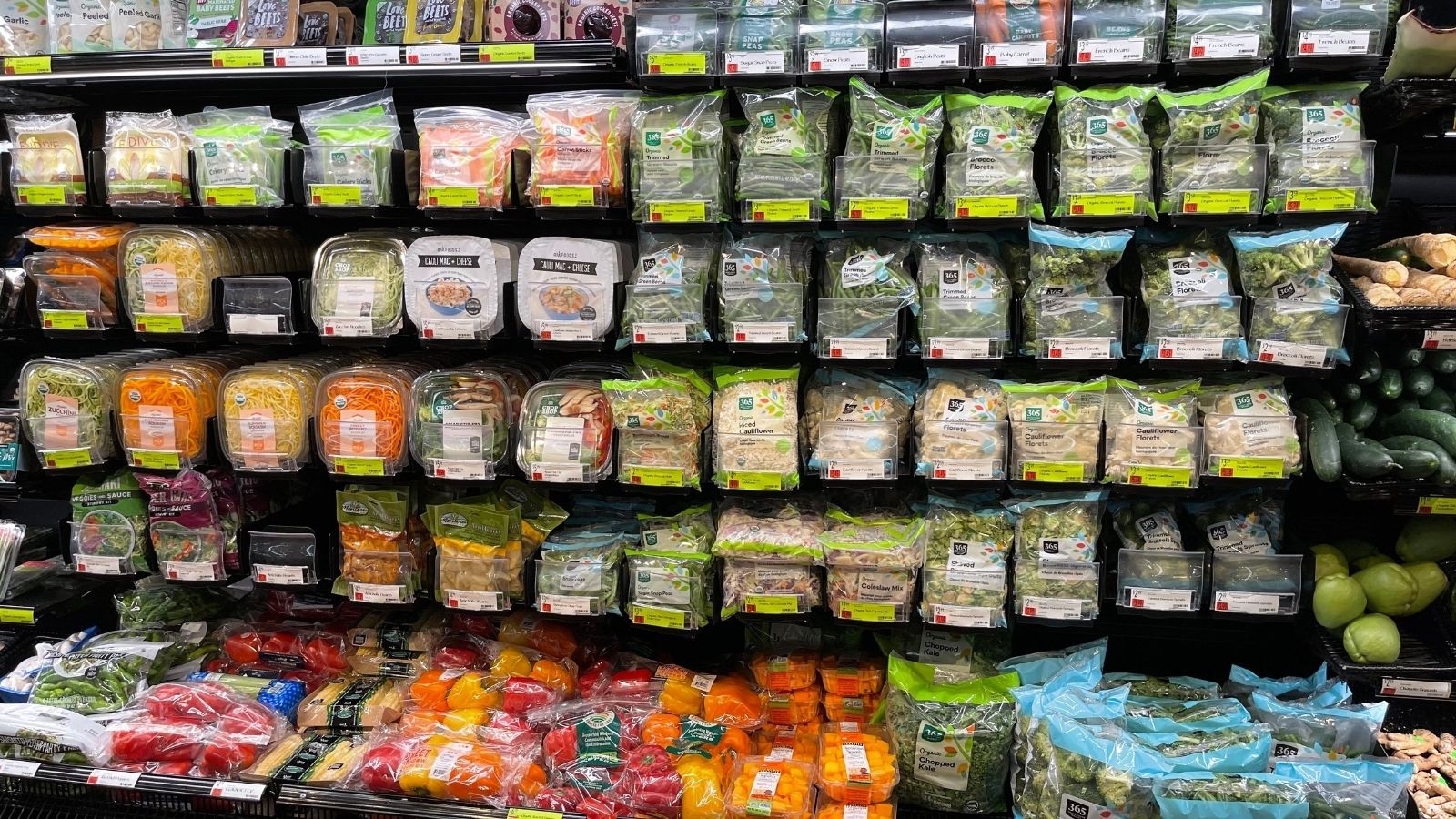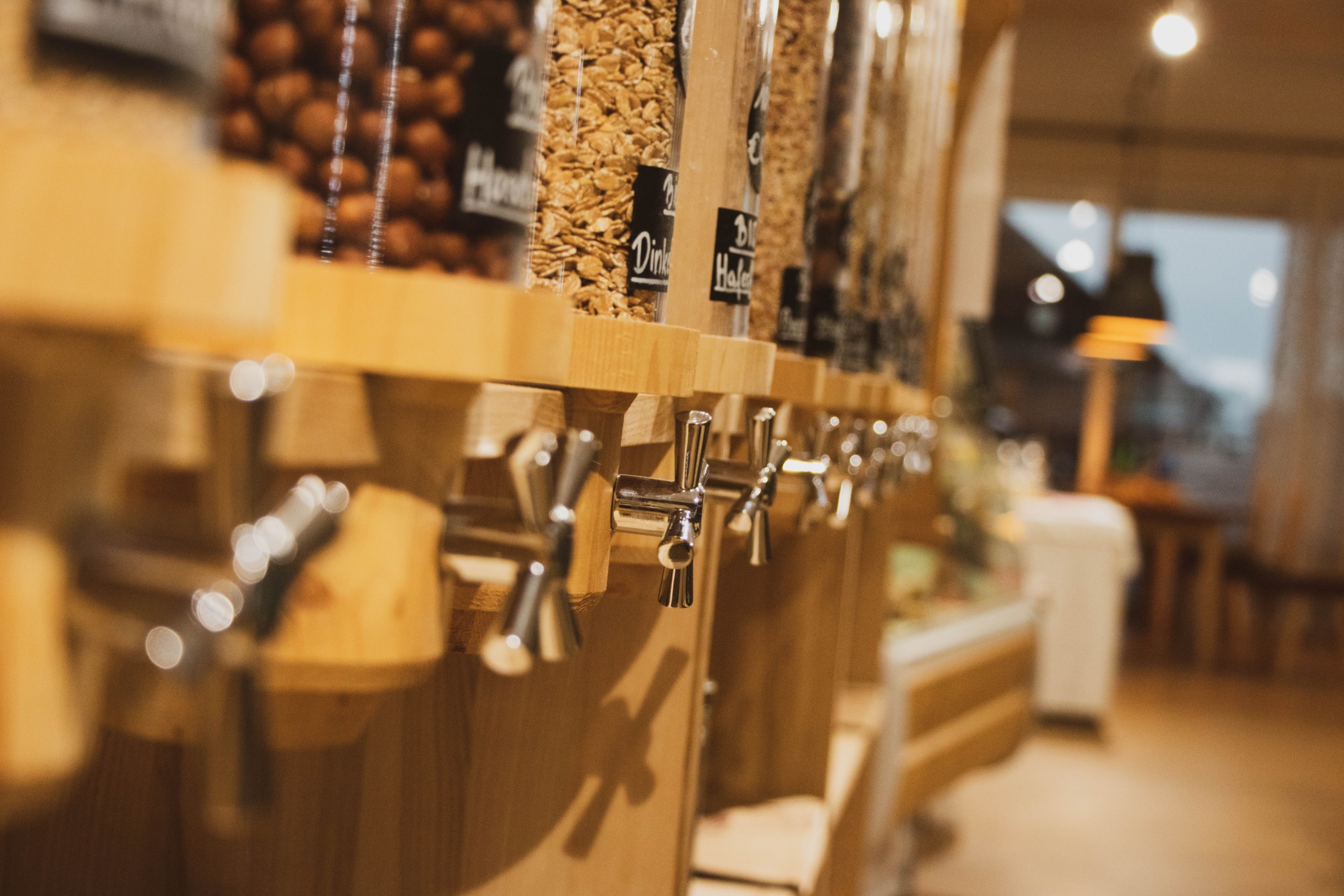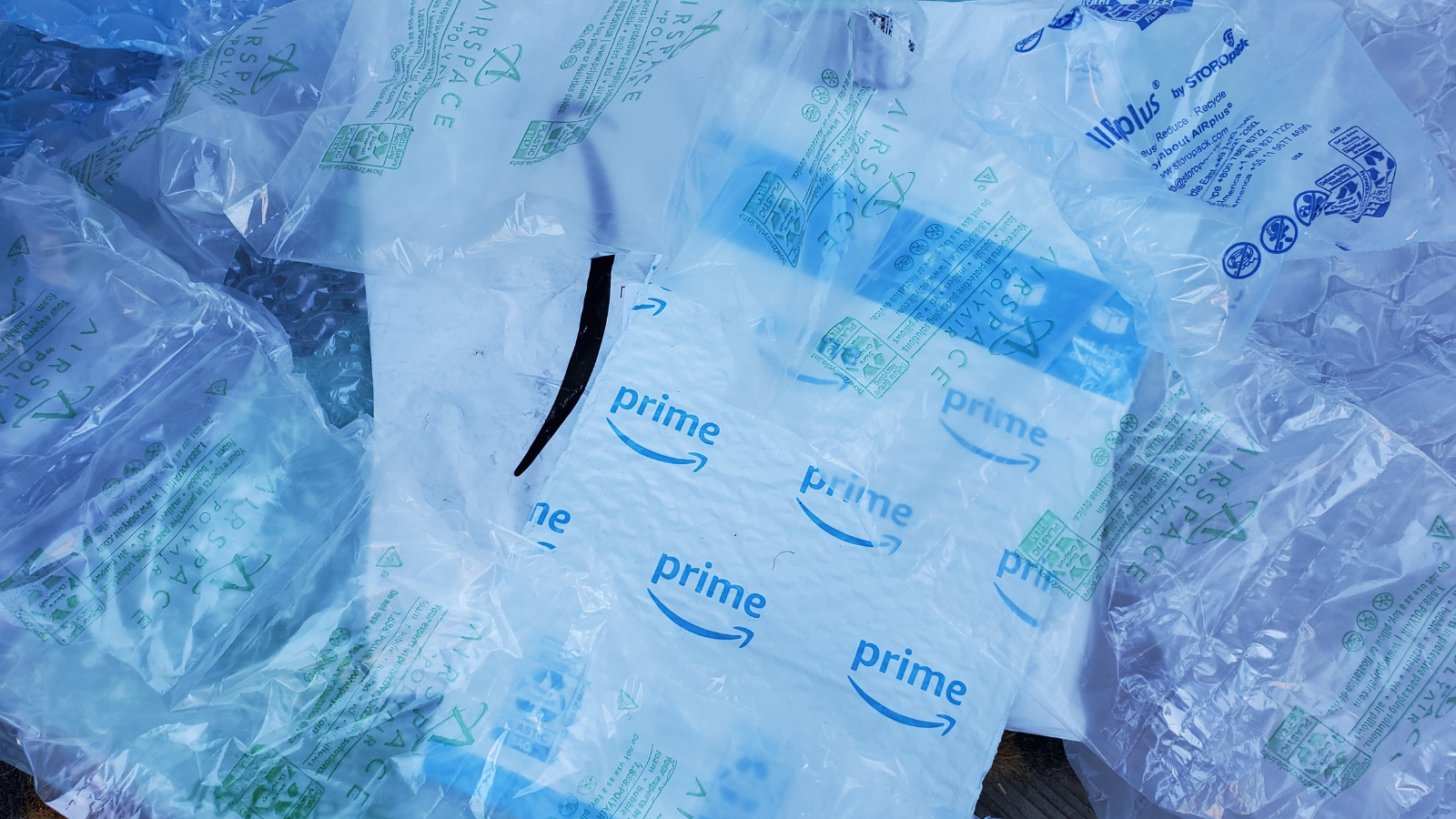10 steps Whole Foods can immediately take to reduce single-use plastic
The national chain prides itself on being a green grocer, but is falling short. Here are 10 steps that Whole Foods should take to be more sustainable in the new year.

This blog was co-authored by Elizabeth DiSanto, oceans associate with Environment America Research & Policy Center, and Juliana Clejan, zero waste associate with U.S. PIRG Education Fund.
To turn the tide on plastic pollution, we need retailers to do their part. In the past, supermarket chain Whole Foods took a leadership role in reducing single-use plastic waste by becoming the first U.S. grocer to eliminate plastic bags at checkout. But since then, the grocer has started to lag behind its competitors.
For the second year in a row, Whole Foods received a failing grade in As You Sow’s corporate plastic pollution scorecard. Last year, we called on Whole Foods to reduce single-use plastic, increase reusable or refillable packaging and increase transparency on the company’s plastic use. But Whole Foods’ response has been insufficient.
Over the past year, we’ve gathered almost 80,000 petition signatures from Whole Foods shoppers who care about their health and the environment and want the store to eliminate single-use plastic packaging. Here’s 10 steps that Whole Foods should take – many of which have already been taken by other retailers – to be more sustainable and ultimately be an industry leader once again.
1. Eliminate plastic produce packaging
Single-use plastic packaging for produce is particularly unnecessary, and it can and should be eliminated. France estimates that 37% of its fruits and vegetables are packaged in plastic, and just passed a law to phase out plastic produce packaging in stores across the country. Starting in January 2022, fruits and vegetables, including cauliflower, cucumbers and tomatoes, will be sold plastic-free. If an entire country can phase out plastic produce packaging, so can Whole Foods. Trader Joe’s recently eliminated plastic packaging around apples, potatoes and tomatoes, and switched deli plastic backing for paper. By phasing out plastic produce packaging, Whole Foods would lessen the threat that single-use plastics pose to hundreds of animal species whose lives are endangered by plastic waste consumption.
2. Introduce reusable packaging in all Whole Foods stores
We’re often asked: What alternatives can Whole Foods use to replace 25% of single-use plastic packaging for their branded product lines? Our answer: They need to implement more reusable packaging. Grocery stores like Kroger in the U.S. and Woolworths in Australia have partnered with Loop, to provide reusable packaging for a variety of products. The system works by charging a 100%-refundable deposit for reusable packaging, allowing consumers to shop, eat and return the containers to the store.
Whole Foods could partner with Loop, as Kroger has, or implement its own takeback program for reusable packaging. Another step Whole Foods could take to increase reuse in their stores is by expanding their bulk offerings. Other stores, like B-fresh in Allston, MA, provide fresh nut butter grinders, for honey roasted peanut butter, almond butter and natural peanut butter, offering customers a way to get nut butter without the wasteful single-use packaging. By increasing the size and range of products offered in the bulk section, Whole Foods could increase the reusable and refillable product offerings at their stores.
3. Ensure all remaining packaging, if not reusable, is recyclable or compostable and labeled truthfully
Beyond reducing the amount of unnecessary packaging at its stores, Whole Foods should ensure that all remaining packaging that isn’t already reusable is truly recyclable or compostable. Supermarket chain ALDI has committed to 100% reusable, recyclable or compostable packaging for ALDI-branded products by 2025. Whole Foods should make this same commitment.
Additionally, Whole Foods ought to prohibit the “chasing arrows” symbols on products, including plastic, which cannot be recycled. California recently became the first state to require truthful recyclability labeling to help clear confusion for consumers. Whole Foods should adopt this policy at all its stores across the country using standards for recyclability provided by the FTC’s Green Guide, which outlines recyclability of different packaging materials.
4. Disclose plastic packaging use
Currently, Whole Foods advertises annually reducing plastic packaging in their stores by 1 million pounds. But without disclosing the total amount or types of plastic packaging used each year, there is no way to tell how impactful this reduction truly is, or whether more recyclable rigid plastic is being replaced by non-recyclable film that may end polluting the environment. To increase transparency and accountability, Whole Foods should publicly disclose packaging use.
5. Phase out single-use packaging with dangerous chemicals (BPA, Phthalates and PFAS)
Hazardous chemicals — from BPA to PFAS and phthalates — are commonly found in single-use plastic packaging. These chemicals often make their way into our soil and water, posing significant health and environmental threats. To live up to its green grocer reputation, Whole Foods should get rid of all packaging containing these dangerous chemical compounds, as other companies have already started doing this. Whole Foods has already banned PFAS from their exclusive brand and food service products, but could go further to eliminate toxic chemicals from all the products sold in their stores. Trader Joe’s has informed its vendors to avoid packaging with BPA and phthalates, while health fast casual restaurant chain Sweetgreen has already banned PFAS from its packaging.
6. Accept reusable containers and cups for fresh-food and coffee bars
It’s a common sense solution: allowing customers to bring their own reusable containers at the deli counter, to-go counter, fish and seafood counter, bakery, hot-food bar, and coffee and smoothie bars. Other stores, including Metro in Canada, have already taken this step — and it would be really simple to implement.
7. To support single-use plastic alternatives, offer on-sight compost
Most Whole Foods stores offer fresh food bars with compostable foodware, but many do not offer on-sight compost. In 2015, Americans landfilled or incinerated over 50 million tons of compostable food waste and packaging, contributing to atmosphere-warming methane emissions.
To ensure that food scraps and compostable food containers are actually composted in order to avoid those emissions, Whole Foods should offer on-site composting at every location, including for food waste from the bakery, deli counter, leftover hot-bar ingredients and any compostable packaging offered in-store.
8. Offer 100% recycled paper produce and bulk bags
Whole Foods was the first national retailer to offer Forest Stewardship Council (FSC) certified paper bags at checkout counters. For each bag, consumers are charged a 5-cent fee, incentivizing reusable bags instead of paper. This same principle should be applied to bagging produce and bulk items. Plastic produce and bulk bags are wasteful, polluting and currently not subject to any fee. Grocery stores, including Wegmans, are already offering paper produce bags. Switching to paper bags, and charging a fee for those produce bags, would incentivize consumers to bring their own reusable produce bags, eliminate wasteful packaging and reduce plastic packaging.
9. Promote reusable packaging alternatives throughout the store
Throughout the store, Whole Foods should place reusable containers, cloth produce bags and reusable grocery bags next to non-reusable alternatives. When perusing the isles of most Whole Foods stores, you’ll come across plastic bags in the produce isles and paper bags at check-out stations. Whole Foods should always sell reusable bags at these locations. This would make it convenient for customers to shop plastic-free. Every time customers walk by a non-reusable bag, they’d be reminded of the reusable options they also have available!
10. Invest in community-based waste reduction and recycling infrastructure
Beyond the walls of the store, Whole Foods has several philanthropic programs, including Sourced for Good, the Whole Planet Foundation, the Whole Kids Foundation and the Whole Cities Foundation, among others. These programs provide vital support and funding, but could be expanded to invest in waste reduction and recycling infrastructure initiatives. Such programs would decrease food waste and improve circularity. Other major grocery retailers have taken initiative in this arena already: Kroger started a Zero Waste Foundation in 2018. As part of the program, Kroger collaborates with companies to repurpose waste into sustainable material, help prevent food waste in commercial kitchens, and change the way companies view corporate social responsibility. Kroger also works toward this goal by sharing Zero Waste Recipes.
Whole Foods was once a leader in sustainability, and can be again, if they implement the 10 steps listed above. Plastic packaging is damaging to our health and our environment, with the average American consuming a credit card worth of plastic a week. Whole Foods customers choose the brand to protect their health, but the prevalence of single-use plastic packaging in their stores is overwhelming. To turn the tide on plastic pollution, and safeguard the health of their customers, Whole Foods needs to act now to transition the brand away from harmful plastic.
Topics
Authors
Elizabeth DiSanto
Find Out More

Ditch plastic packaging: Shop at your local refillery

Millions of tiny plastic pellets are being dumped into our waterways

Turning plastic waste into plastic lumber isn’t recycling


